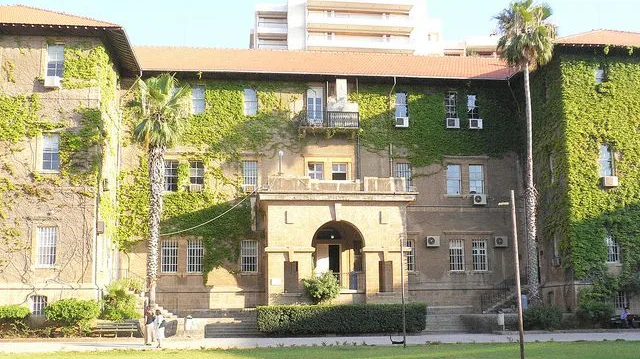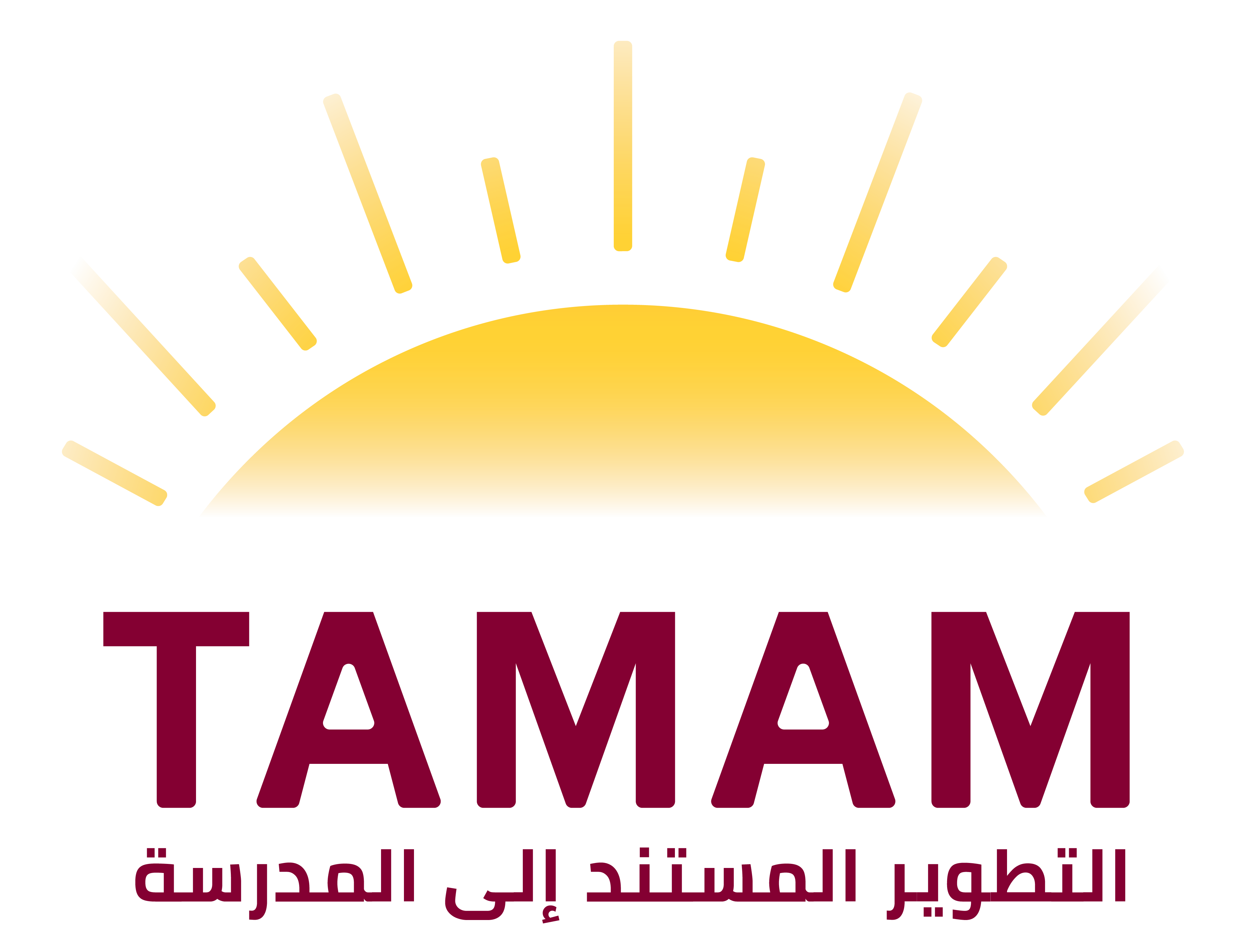محام وشريك مؤسس في مكتب رشيد فهمي كرامي للمحاماة والإستشارات القانونية. محكم ووسيط دولي معتمد لدى عدد من المراكز المحلية والعالمية. مدرب معتمد على الوساطة والتحكيم لدى نقابة المحامين في طرابلس ومركز التسوية الفعالة للنزاعات– لندن ومعهد المحكمين القانونين. وضع وشارك في العديد من الدورات التدريبية المحلية والدولية المتعلقة بالوساطة والتحكيم. تولى وضع عدة مشاريع قوانين أبرزها مشروع قانون الوساطة المعتمد من نقابة المحامين في طرابلس والمناقش حالياً أمام اللجان النيابية المختصة. كما تولى وضع قواعد مركز الوساطة والتحكيم في نقابة المحامين في طرابلس. بالإضافة الى إعداد عدد من الدراسات القانونية والمتعلقة بالوساطة والوسائل البديلة لحلّ النزاعات. خبير سابق في الوساطة لدى مؤسسة التمويل الدولية. مستشار وزير الشؤون الإجتماعية لشؤون المرأة والطفل والمشرف على خطة وزارة الشؤون الموضوعة لحماية المرأة والطفل والموقعة مع الـيونيسف. عضو في جمعية بيت التدريب والحوار
TAMAM Strategic Goals for Phase V
The TAMAM Movement is proposing to pursue six strategic goals for phase V. Below is a description of the proposed strategic goals with the major suggested activities under each goal:
Since
2007

Strategic goal I: Promote active membership within an expanding diverse professional network
Suggested activities:
- Develop and implement a membership framework that specifies criteria for member participation and recruitment in TAMAM network.
- Solicit members’ active commitment to the vision and mission of TAMAM movement
- Promote and maintain the active engagement of members through well-defined strategies
- Promote and support effective interaction and dialogue among current members through different means and platforms.
- Provide training for more schools following TAMAM leadership building capacity program as a way to identify and support potential active members
- Build the leadership capacity of coaches to expand the membership and keep the momentum of the movement
- Identify and attract researchers in regional or international universities who are interested in conducting research about TAMAM
Strategic goal II: Establish partnerships with institutional stakeholders
Suggested activities:
- Partnership with influential organizations/ institutions:
- Develop a strategy and plans of actions for identifying and attracting partner organizations/ institutions
- Identify influential entities that gather policy and decision makers in the different Arabic countries, then design a strategy to communicate and partner with them.
- Sign letters of understanding (LOU) and/or memorandum of understanding (MOU) with new institutions (universities and ministries, institutes or centers that focus on impacting policies
- Partnership with pioneer schools:
- Define terms of partnership with TAMAM pioneer schools who concluded the first cycle in TAMAM
Strategic goal III: Encourage the establishment of Networked Improvement Communities [NIC]
Suggested activities:
- Short-term school networking:
- Encourage and support voluntary initiatives for school networking among TAMAM community members
- Long-term school networking:
- Provide focused support to TAMAM Jordan Hub schools networking initiative around improving Arabic Teaching
- Encourage and support cross-country networking initiative among TAMAM schools around partnerships with parent and community
- Develop the design characteristic of the effective NIC in TAMAM and how they can contribute to the TAMAM movement
- Country networks/hubs:
- Encourage and the support the initiation and sustainability of TAMAM networks/ hubs in different countries while remaining responsive to the unique organizational context of each country
Strategic goal IV: Enhance research lab activities and its research-based designs
Suggested activities:
- Research:
- Develop a clear research agenda to study, in depth, critical aspects of TAMAM ongoing experiences with a focus on success stories
- Conduct collaborative research studies stemming from the TAMAM research agenda
- Conduct evaluation studies of TAMAM impact – with focus on impact on teachers, principals’ leadership and students’ agency for learning
- Develop case studies of success stories of TAMAM impact with focus on students and this could be as written articles or recorded videos
- Invite regional and international researchers to explore TAMAM database and develop research proposals within the TAMAM research agenda.
- Conduct cross-cultural research studies that compare TAMAM model and experiences to well-established international frameworks [ex. NIC] and disseminate findings in international conferences/ journals.
- Publish research articles about TAMAM in English and Arabic peer reviewed journals
- Coaching/Program Design:
- Design a Monitoring procedure/ system for schools and coaches to protect the integrity of the implementation of the TAMAM model and to collect the processes and prototypes designed by the schools and coaches.
- Develop and refine further the designs of the three experimental programs: “Parent School Partnership Program” and “Local Community School Partnership Program”, and “Student Leadership” to fit different contexts
- Develop scaling up strategies.
Strategic goal V: Increase the visibility of TAMAM activities
Suggested activities:
- Members of the TAMAM Network
- Conduct on-line activities through TAMAM platform to disseminate on going activities, achievements and news on the project activities
- Ensure the visibility of the member schools activities on TAMAM social media
- Friends of TAMAM, volunteers & interns
- Locate interns and volunteers from different universities and invest in their abilities to support TAMAM activities
- Identify potential individuals from the interns and volunteers to be friends of TAMAM
- Mobilize friends of TAMAM to support the dissemination of the TAMAM movement activities and achievements
- Dissemination to the broader public
- Develop and implement a dissemination and visibility plan for TAMAM (Open sourcing, Knowledge Dissemination, Campaigns. / Influencing Public Awareness, Norms or Behaviors, Smart volunteering models …)
- Develop a well-defined internal and external communication strategies and platforms within TAMAM network and community at large
- Provide TAMAM resources as an open education source
Strategic goal VI: Sustain TAMAM activities [Sustainability]
Suggested activities:
- Funding:
- Locate funding agencies with philosophy aligning with TAMAM
- Apply for different funding opportunities to support TAMAM various activities
- Training programs:
- Provide TAMAM in-service programs where educators can complete in return of receiving university level certification.
- Provide income-generating services/courses.
- Knowledge management strategies and platforms:
- Develop further the existing knowledge management strategies and platforms to make it accessible for educational researchers
- Develop a plan that organizes access to the TAMAM database (ethical measures, consent process…)
- Scaling up:
- Identify components of TAMAM to be scaled up (ex. designs extracted from school improvement projects, programs designed by PST, services, processes, products…)
- Develop scaling up plan with well-defined strategies and mechanisms to scale up different components of TAMAM functionally [in programs and services] or quantitatively [in number and reach] (ex. Disseminate the designs produced by the PST and those from school improvement projects that were found to be impactful/ effective across context)
Suggested activities:
- Develop and implement a membership framework that specifies criteria for member participation and recruitment in TAMAM network.
- Solicit members’ active commitment to the vision and mission of TAMAM movement
- Promote and maintain the active engagement of members through well-defined strategies
- Promote and support effective interaction and dialogue among current members through different means and platforms.
- Provide training for more schools following TAMAM leadership building capacity program as a way to identify and support potential active members
- Build the leadership capacity of coaches to expand the membership and keep the momentum of the movement
- Identify and attract researchers in regional or international universities who are interested in conducting research about TAMAM
Suggested activities:
- Partnership with influential organizations/ institutions:
- Develop a strategy and plans of actions for identifying and attracting partner organizations/ institutions
- Identify influential entities that gather policy and decision makers in the different Arabic countries, then design a strategy to communicate and partner with them.
- Sign letters of understanding (LOU) and/or memorandum of understanding (MOU) with new institutions (universities and ministries, institutes or centers that focus on impacting policies
- Partnership with pioneer schools:
- Define terms of partnership with TAMAM pioneer schools who concluded the first cycle in TAMAM
Suggested activities:
- Short-term school networking:
- Encourage and support voluntary initiatives for school networking among TAMAM community members
- Long-term school networking:
- Provide focused support to TAMAM Jordan Hub schools networking initiative around improving Arabic Teaching
- Encourage and support cross-country networking initiative among TAMAM schools around partnerships with parent and community
- Develop the design characteristic of the effective NIC in TAMAM and how they can contribute to the TAMAM movement
- Country networks/hubs:
- Encourage and the support the initiation and sustainability of TAMAM networks/ hubs in different countries while remaining responsive to the unique organizational context of each country
Suggested activities:
- Research:
- Develop a clear research agenda to study, in depth, critical aspects of TAMAM ongoing experiences with a focus on success stories
- Conduct collaborative research studies stemming from the TAMAM research agenda
- Conduct evaluation studies of TAMAM impact – with focus on impact on teachers, principals’ leadership and students’ agency for learning
- Develop case studies of success stories of TAMAM impact with focus on students and this could be as written articles or recorded videos
- Invite regional and international researchers to explore TAMAM database and develop research proposals within the TAMAM research agenda.
- Conduct cross-cultural research studies that compare TAMAM model and experiences to well-established international frameworks [ex. NIC] and disseminate findings in international conferences/ journals.
- Publish research articles about TAMAM in English and Arabic peer reviewed journals
- Coaching/Program Design:
- Design a Monitoring procedure/ system for schools and coaches to protect the integrity of the implementation of the TAMAM model and to collect the processes and prototypes designed by the schools and coaches.
- Develop and refine further the designs of the three experimental programs: “Parent School Partnership Program” and “Local Community School Partnership Program”, and “Student Leadership” to fit different contexts
- Develop scaling up strategies.
Suggested activities:
- Members of the TAMAM Network
- Conduct on-line activities through TAMAM platform to disseminate on going activities, achievements and news on the project activities
- Ensure the visibility of the member schools activities on TAMAM social media
- Friends of TAMAM, volunteers & interns
- Locate interns and volunteers from different universities and invest in their abilities to support TAMAM activities
- Identify potential individuals from the interns and volunteers to be friends of TAMAM
- Mobilize friends of TAMAM to support the dissemination of the TAMAM movement activities and achievements
- Dissemination to the broader public
- Develop and implement a dissemination and visibility plan for TAMAM (Open sourcing, Knowledge Dissemination, Campaigns. / Influencing Public Awareness, Norms or Behaviors, Smart volunteering models …)
- Develop a well-defined internal and external communication strategies and platforms within TAMAM network and community at large
- Provide TAMAM resources as an open education source
Suggested activities:
- Funding:
- Locate funding agencies with philosophy aligning with TAMAM
- Apply for different funding opportunities to support TAMAM various activities
- Training programs:
- Provide TAMAM in-service programs where educators can complete in return of receiving university level certification.
- Provide income-generating services/courses.
- Knowledge management strategies and platforms:
- Develop further the existing knowledge management strategies and platforms to make it accessible for educational researchers
- Develop a plan that organizes access to the TAMAM database (ethical measures, consent process…)
- Scaling up:
- Identify components of TAMAM to be scaled up (ex. designs extracted from school improvement projects, programs designed by PST, services, processes, products…)
- Develop scaling up plan with well-defined strategies and mechanisms to scale up different components of TAMAM functionally [in programs and services] or quantitatively [in number and reach] (ex. Disseminate the designs produced by the PST and those from school improvement projects that were found to be impactful/ effective across context)
